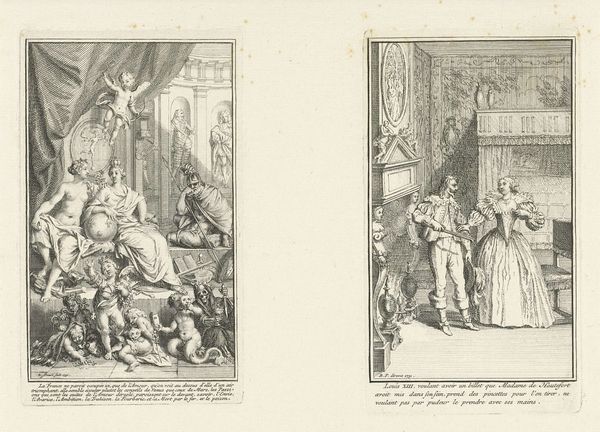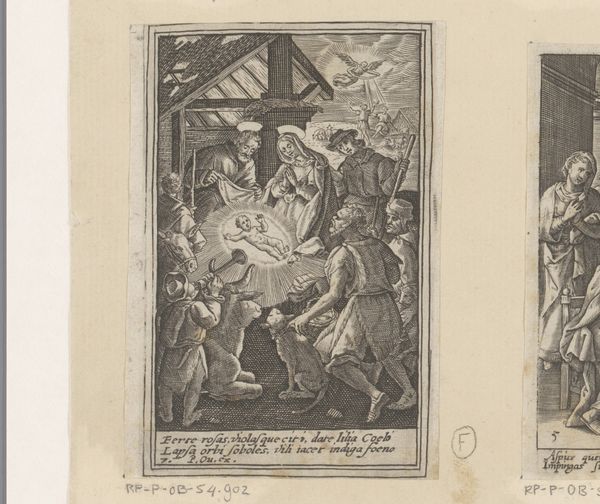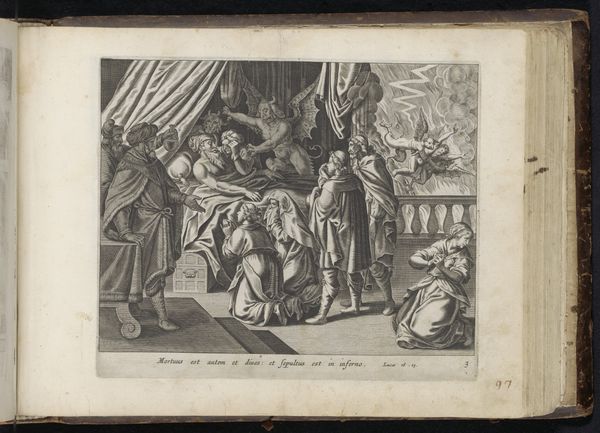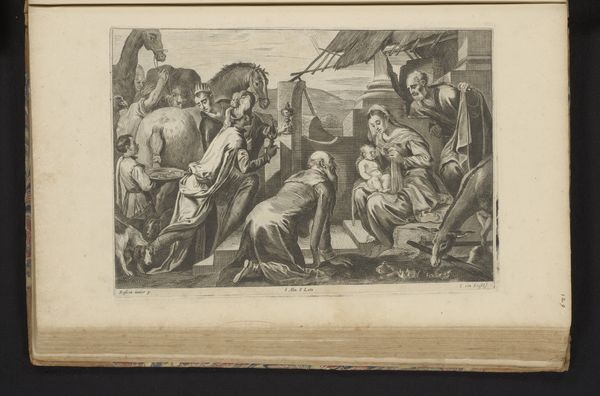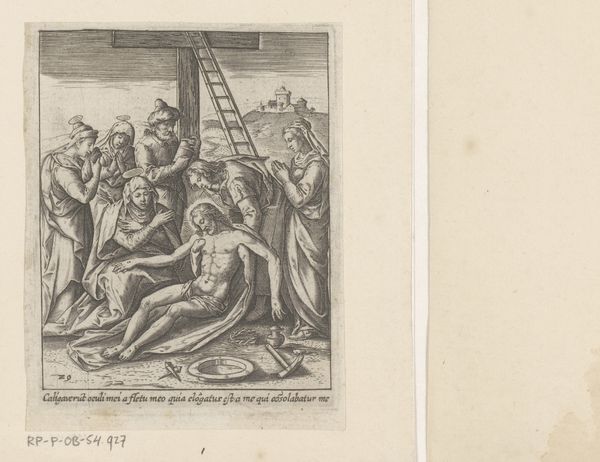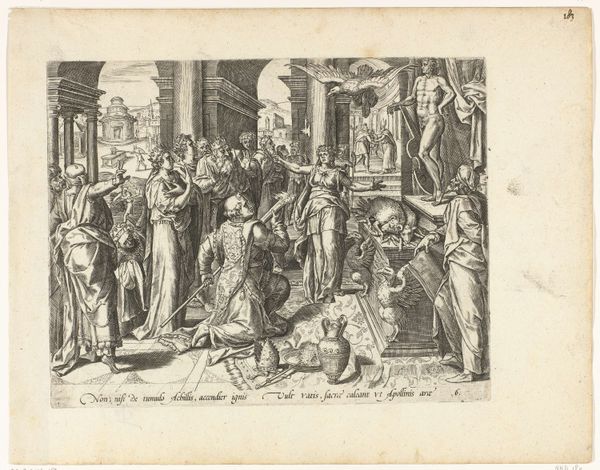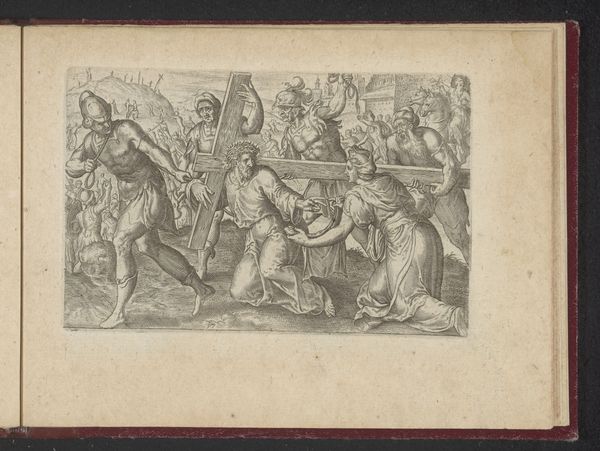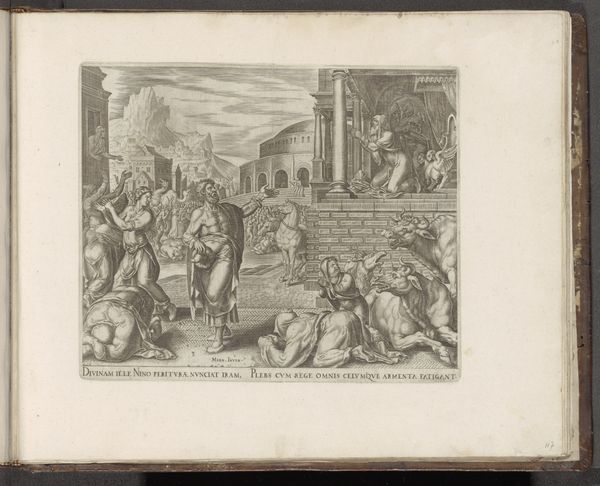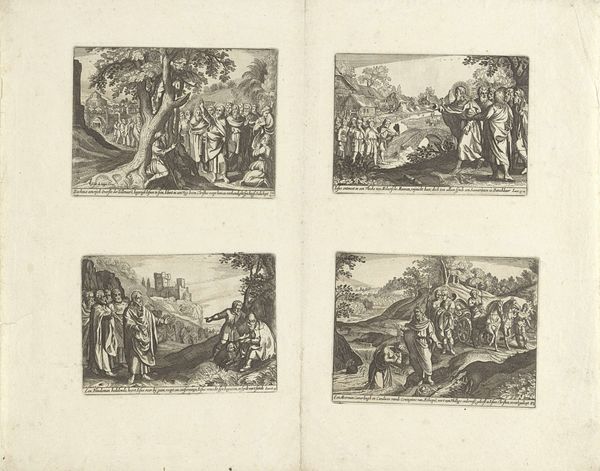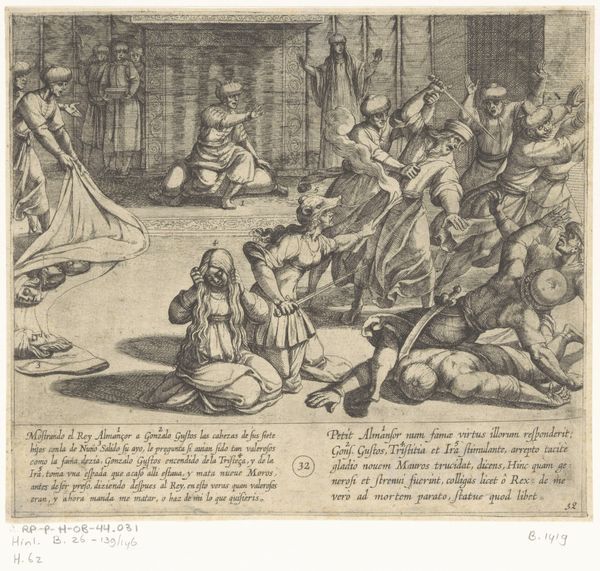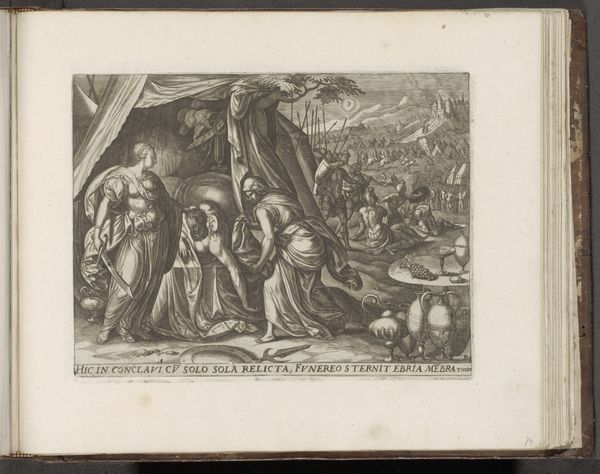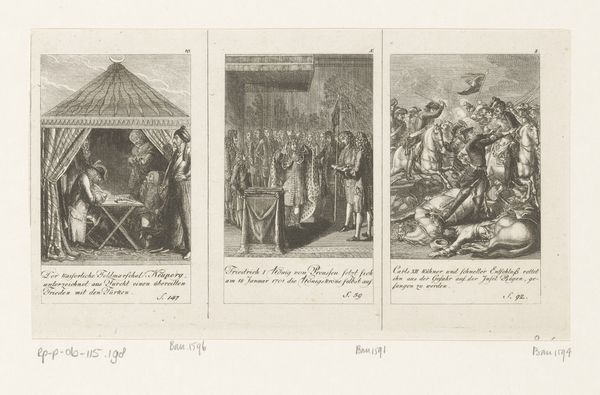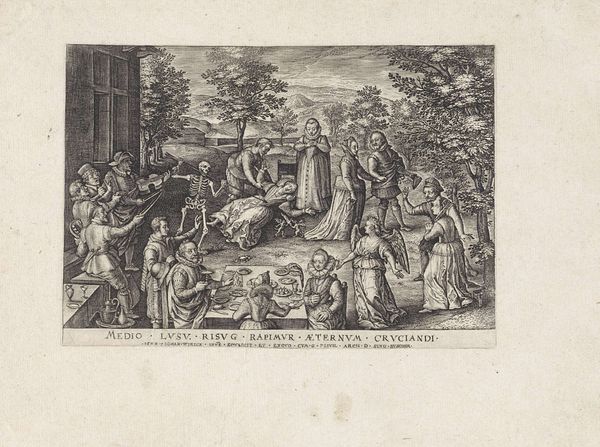
print, engraving
#
medieval
# print
#
figuration
#
history-painting
#
engraving
Dimensions: height 91 mm, width 73 mm
Copyright: Rijks Museum: Open Domain
Editor: We're looking at "The Kiss of Judas and the Arrest of Christ," an engraving from between 1582 and 1671, currently at the Rijksmuseum. The scene feels very tense, everyone’s crowded together and there's a lot of action implied. What details stand out to you in this piece? Curator: Given this is a print, and a reproduction, it's important to focus on the labor and resources involved in its making. What kind of access did different social classes have to images like this at the time? Was it intended as devotional material, a source of political commentary, or something else entirely? Editor: That’s a great point about accessibility. The level of detail suggests it was relatively expensive, which probably limited its reach. How might that affect our interpretation? Curator: Exactly. The engraving’s fine lines and meticulous depiction point towards skilled labor. This wasn’t mass-produced in the modern sense. Also, consider the symbolic value attached to printed images then. Whose message does it amplify, and what economic structures support its distribution? Editor: So, we're not just looking at the religious narrative, but also at the socioeconomic context of its production and consumption. Was the artist making a statement through the work itself, or simply fulfilling a commission? Curator: That’s the crucial question! Consider the distribution networks for prints, and the roles that workshops, patrons, and perhaps even religious institutions, played in shaping both the content and its availability. How might the rise of printmaking democratize image production, and challenge existing hierarchies of art and craft? Editor: It’s fascinating to think about how even a seemingly religious image can reveal so much about the material conditions and social forces at play. Curator: Precisely. By focusing on the materiality and mode of production, we shift the focus from the subject to the systems that enabled its creation and circulation. That opens up entirely new avenues for understanding its significance.
Comments
No comments
Be the first to comment and join the conversation on the ultimate creative platform.
